 August 6, 2020 John E. Ross, KD8IDJ, Editor
| ||||||
Amateur Radio Volunteers Go on Alert for Isaias Amateur Radio Emergency Service (ARES) volunteers along the eastern seaboard were on alert this week to support needed "All county teams are prepared, and SKYWARN teams are requested to provide key severe weather data to the regional National Weather Service (NWS) Office," Devine told ARRL, adding that other SECs from the middle Atlantic states were in communication. The Hurricane Watch Net (HWN) activated twice for Isaias -- on July 31 and on August 1. The initial activation ran 41 hours, the second "Throughout this short 12-hour activation for this second activation for Isaias, members of HWN collected and forwarded many surface reports from the coastal areas of South Carolina and North Carolina to the National Hurricane Center by way of WX4NHC [at the National Hurricane Center]," Graves said. Tornadoes, flooding caused by heavy rainfall, and falling trees accounted for most of the fatalities. The storm tracked into eastern Pennsylvania as well as through the New York City-Long Island area. ARRL 2020 Simulated Emergency Test (SET) Scheduled for October 3 - 4 Weekend The 2020 ARRL Simulated Emergency Test (SET) will take place October 3 - 4. The annual, nationwide exercise provides Amateur Radio Emergency Service (ARES) volunteers the chance to test personal emergency-operating skills and communication readiness in a simulated emergency deployment. ARRL is asking participants to adhere to Center for Disease Control (CDC) and local health department COVID-19 guidelines by staying home, maintaining safe distances when around people, and following recommended cleaning and disinfecting practices.
ARRL Field Organization leadership at the Section and local levels -- as well as many other volunteers who are active in public service and emergency communication -- are developing emergency scenarios with a variety of agencies and organizations they've partnered with in the past during real emergencies and disasters. Given the ongoing pandemic, an in-person emergency exercise may not be possible this year, but volunteers are encouraged to adapt to the circumstances. Station and skills readiness are tenets of the Amateur Radio Service. Any time we spend on the air will contribute to developing and practicing our personal radio communication capability. Volunteers with ARES, the National Traffic System (NTS), the Radio Amateur Civil Emergency Service (RACES), SKYWARNâ¢, Community Emergency Response Team (CERT), Salvation Army Team Emergency Radio Network (SATERN), and other allied groups and public service-oriented amateur radio groups are among those eligible to participate in the SET to practice emergency operation plans, nets, and procedures. ARRL has long-standing relationships with several national organizations including the American Red Cross, the National Weather Service, the Federal Emergency Management Agency, and the Salvation Army, among others. This year's SET can be a chance to reach out to these partners -- at a safe distance and/or via online meetings and teleconferences -- to establish or review plans and develop working relationships. ARRL Field Organization leaders have the option of conducting local or Section-wide SETs on dates other than the October 3 - 4 focal-point weekend, but no later than the end of the calendar year. Contact your local ARRL Emergency Coordinator or Net Manager or ask your Section Manager. Additional information about SET and the reporting forms are available on the ARRL website. German Satellite Demonstrates Orbit Control on a 1U CubeSat The University of Wuerzburg Experimental Satellite 4 (UWE-4) successfully used its propulsion system in order to conduct orbit control. The 1-unit (1U) CubeSat is equipped with an electric propulsion system called NanoFEEP, developed by the Technical University in Dresden. This marks the first time in CubeSat history that a 1U CubeSat has changed its orbit using an onboard propulsion system. Several maneuvers were performed within 11 days, between June 23 and July 3, lowering the CubeSat's altitude by more than 100 meters (328 feet), compared to an average of 21 meters (69 feet) with natural orbital decay. Coincidentally, on July 2, the UWE-4 team received a "conjunction data message" from the US Air Force, indicating a potential safety Lowering the altitude of a spacecraft in low-Earth orbit (LEO) has the negative effect of reducing its lifetime, because low-Earth-orbiting (LEO) satellites usually burn up during re-entry. "Thus, this experiment is a concept demonstration of a deorbiting maneuver shown at the smallest class of spacecraft in LEO," the university said. While satellites are not yet required to carry propulsion systems to facilitate a planned deorbiting, such an obligation is under serious discussion, due to the vastly increasing number of satellites in mega constellations. "The experiment of UWE-4 presents a deorbiting solution for the fraction of space debris of operational, but unused, satellites of today and for the mega constellations of tomorrow," the university said. AMSAT notes that US regulations make the ability to deorbit a requirement for high-Earth-orbit amateur satellites in the future. The first activation of the NanoFEEP thruster on UWE-4 took place in early 2019. UWE-4 transmits telemetry on 435.600 MHz. ARRL Podcasts Schedule
The On the Air and Eclectic Tech podcasts are sponsored by Icom. Both podcasts are available on iTunes (iOS) and Stitcher (Android), as well as on Blubrry -- On the Air | Eclectic Tech. The K7RA Solar Update Tad Cook, K7RA, Seattle, reports: Sunspot Cycle 25 is under way! We saw one new spot on July 28 and two new ones on August 2 and 3. The August daily sunspot numbers were 22 and 23 on the dates of their appearance, and the total sunspot area grew on Wednesday to 160 millionths of the visible solar disc. The sunspot area has not been as large since May 2019, when it ranged from 140 to 410 millionths of the solar disc over a 2-week period.
The planetary A index increased slightly, from 6.7 to 7, and the mid-latitude A index declined slightly, from 8.7 to 7.4. Predicted solar flux is 73 on August 6 - 8; 71 on August 9 - 13; 69 on August 14 - 17; 71 on August 18 - 25; 73 on August 26 - 30; 71 on August 31 - September 7; 69 on September 8 - 13, and 71 on September 14 - 19. The planetary A index forecast is 5 on August 6 - 7; 8 on August 8; 5 on August 9 - 23; 8 on August 24 - 25; 5 on August 26 - 28; 12, 8, and 8 on August 29 - 31, and 5 on September 1 - 19. Frank Donovan, W3LPL, noted this week that August 5 marked "the longest stretch of consecutive days with sunspots since September 2017, when there were 56 consecutive days. The next Solar Cycle 25 milestone will be an energetic sunspot region that increases the adjusted SFI to 80 or higher." WJ5O has an interesting history of 10-meter sporadic E and info on beacons. Sunspot numbers for July 30 - August 5 were 22, 23, 22, 22, 23, 12, and 13, with a mean of 19.6. The 10.7-centimeter flux was 73.3, 72.3, 72, 72.7, 72.7, 73, and 73.4, with a mean of 72.8. Estimated planetary A indices were 4, 4, 3, 9, 16, 8, and 5, with a mean of 7. Middle latitude A index was 5, 5, 3, 9, 15, 9, and 6, with a mean of 7.4. A comprehensive K7RA Solar Update is posted Fridays on the ARRL website. For more information concerning radio propagation, visit the ARRL Technical Information Service, read "What the Numbers Mean...," and check out K9LA's Propagation Page. A propagation bulletin archive is available. For customizable propagation charts, visit the VOACAP Online for Ham Radio website. Share your reports and observations. Just Ahead in Radiosport
Meet Up with ARRL Virtually August 7 - 9 at QSO Today Virtual Ham Expo ARRL will be a virtual exhibitor at the all-online QSO Today Virtual Ham Expo, Friday - Sunday, August 7 - 9. ARRL staffer Bob Inderbitzen, NQ1R -- a familiar face at many in-person hamfests and conventions for nearly 30 years -- will be among the more than 21,000 registered to attend.
Inderbitzen will join a handful of ARRL staff members supporting the organization's virtual booth throughout the event. Exhibitors will also include major amateur radio manufacturers and equipment dealers, and there will opportunities to text and video chat with representatives. In addition to the exhibit hall, five fully interactive lecture halls will feature speakers and presentations spanning the range of ham radio interests and activities. "I hope many members and other attendees will 'drop by' the ARRL booth to say hello," Inderbitzen said. "Visit us to learn about the many initiatives and new benefits introduced to ARRL members this year. We'll also have incentives to join ARRL and the Diamond Club, renew your membership, and some publication purchase specials." As ARRL's Product Development Manager, Inderbitzen collaborates with other staff and member-volunteers to develop and improve membership services, programs, and products. This year, ARRL has introduced a string of new membership benefits that includes On the Air magazine, expanded member-access to all four ARRL digital magazines including QST, On the Air, QEX, and NCJ, and the ARRL Learning Network, a new member-led webinar series. ARRL has also added additional programs to its podcast offerings, which now include On the Air, Eclectic Tech, and ARRL Audio News. The QSO Today Virtual Ham Expo is an ARRL-sanctioned event. Registration is free. A complete schedule and list of exhibitors and speakers is available on the QSO Today Virtual Ham Expo website. Read more. New England Division Convention Canceled Due to COVID-19 Initially scheduled for July, the Northeast HamXposition, host of the 2020 ARRL New England Division Convention, was moved back to November because of the coronavirus pandemic. Now, the in-person event is off until next summer, although some activities will take place online this year. Renamed before the 2019 show, the Northeast HamXposition has succeeded the long-running annual Boxboro hamfest in Boxborough, Massachusetts. As announced early this year, the next HamXposition will take place in a new location -- Marlborough, Massachusetts. "Large indoor gatherings such as our convention are currently prohibited by Massachusetts state law," Northeast HamXposition Chair Bob DeMattia, K1IW, said over the weekend. "This is highly unlikely to change by November. Unfortunately, we will not be able to hold a physical convention this year."
The Nashua Area Radio Society will run an online version of its "Ham Bootcamp." This multi-session program covers various amateur radio activities. Radio Amateur Takes Part in Historic First Commercial Human Spaceflight to ISS Bob Behnken, KE5GGX, was one of two NASA astronauts who made spaceflight history over the weekend. Behnken and Doug Hurley were the first astronauts since the 1970s to make a water landing, after their Crew Dragon capsule splashed down in the Gulf of Mexico on Sunday. On May 30, the pair made history as the first live crew to be launched
into space in a commercial vehicle, for a stay on the International Space Station (ISS), marking the return of human spaceflight to US soil for the first time in nearly a decade. A SpaceX Falcon 9 vehicle carried the crew into orbit from Cape Canaveral. The so-called "Demo-2" was the last major test for SpaceX's human spaceflight system, to be certified by NASA for operational crew missions to and from the ISS. Four huge parachutes carried the Crew Dragon capsule to a safe splashdown near Pensacola, Florida, on Sunday, August 1. "On behalf of the SpaceX and NASA teams, welcome back to planet Earth," SpaceX Engineer Michael Heiman radioed to the crew after their landing. "And thanks for flying SpaceX."
While part of the space station crew for 2 months, Behnken and Astronaut Chris Cassidy, KF5KDR, the sole American onboard when their Endeavour capsule docked, carried out four spacewalks to install new batteries on the ISS. The SpaceX Crew Dragon vehicle was designed for short-term missions, and Behnken and Hurley's mission had only been expected to last a week. As a result, Behnken did not receive Amateur Radio on the International Space Station (ARISS) training on the ISS ham radio gear so he could take part in school contacts. Announcements
SAQ Alexanderson Day in the Age of COVID-19 Despite mid-summer conditions, at least seven US listeners, most of them radio amateurs, were able to copy the 17.2 kHz signal from the SAQ Alexanderson alternator at the World Heritage Grimeton Radio Station in Sweden. The July 5 transmission from the vintage electro-mechanical transmitter commemorated the annual Alexanderson Day. All told, more than 600 reception reports were received -- a new record. "The odds were not optimal this year, with the ongoing coronavirus pandemic, and early Sunday morning, the rain was pouring down, and heavy wind gusts made it hard to even take a peek at the
antennas outdoors," the report from SAQ said. "The transmitter hall was empty except for five members of the Alexander Association." Dating from the 1920s, the Alexanderson alternator -- essentially an ac alternator run at extremely high speed -- can put out 200 kW, but is typically operated at less than half that power level. Once providing reliable transatlantic communication, it is now a museum piece and only put on the air on special occasions. The transmitter was developed by Swedish engineer and radio pioneer Ernst Alexanderson, who was employed at General Electric in Schenectady, New York, and was chief engineer at the Radio Corporation of America. Two Alexanderson Day transmissions were made. "On the first transmission, the rainy weather was making it hard at first to reach good output to the antenna, but after a few minutes with the 'VVV VVV VVV de SAQ' loop, the system started to dry, and the amps [antenna current] increased. Skies cleared for the second transmission later in the day, and, according to the report, the antenna current rose to 60 A, which 'is optimal,'" the report said. The occasion marked the inaugural transmission by Kai Sundberg, SA6KSU, at the helm of SAQ in a radio uniform dating back to the 1960s. An article about Alexanderson Day, "The Legacy of Radio at Grimeton Station, SAQ," appears on page 66 of the July 2019 issue of QST. Lost Video Archive from 1997 Heard Island VK0IR DXpedition Found The VK0IR DXpedition to Heard Island took place in January and February of 1997. Co-Leader (with Peter Casier, ON6TT) Robert Schmieder, KK6EK, shot a lot of video during the amateur radio adventure, but lost track of it afterward. During the VK0IR DXpedition, DXers from around the world were astounded that signals from the subantarctic Indian Ocean could be heard at the bottom of the solar cycle. A team of 20 operators carried out the massive, expensive, then-high-tech, and very successful DXpedition, making a remarkable 80,673 contacts. The VK0IR story was told in detail in the September 1997 issue of QST.
"Recently, I discovered about 6 hours of video that I had shot during the expedition, but which had never been seen -- not even by me!" Schmieder told The Daily DX. "I divided the collection into six parts, which I have posted to YouTube." Schmieder offered his introductions to each segment: "On 11 January 1997, 20 men landed on one of the most remote places in the world: Heard Island, located in the Southern Ocean, almost to Antarctica. They set up a village with all life support, including accommodations, light and power, galley, and a huge array of radios, antennas, and satellite communications gear. "Over the next 2 weeks, using the call sign VK0IR, the team logged 80,673 contacts with radio operators worldwide, a new world record for self-supported expeditions. The team also made daily explorations around the island to document the rocks, glaciers, rivers, plants, birds, and seals that are the dominant residents of this live volcano. Many of you will remember this expedition, and quite a few of you made significant contributions. "The expedition was documented in numerous articles, presentations, and professional videos, and received many awards, including a 2020 poll that ranks it #1 among all such expeditions of the past 30 years. "Unnoticed at the time, [I] shot 6 hours of video of all aspects of the project. Unfortunately, these videos were lost until mid-2020, 23 years later. No one, including [me], had ever viewed these videos. Upon finding them, [I] divided the material into six separate parts. Other than separation into the parts, the videos needed little editing. They contain almost all of the material that was shot in 1997, and most of it is in exactly the order it was shot."
These videos, which might offer an entertaining club presentation, are also available by searching "Robert Schmieder Heard Island" on YouTube.com. -- Thanks to The Daily DX In Brief...
Getting It Right An item in "Announcements" in the July 9 edition of The ARRL Letter contained a metric-to-English conversion. A sentence should have said, "The new receiver is located in Bláfjöll at an altitude of 690 meters (about 2,298 feet)." Upcoming ARRL Section, State, and Division Conventions Note: Many conventions and hamfests have been canceled or postponed due to the coronavirus pandemic. Check the calendar of canceled events on the ARRL website.
ARRL -- Your One-Stop Resource for . .
Subscribe to...
Free of charge to ARRL members...
| ||||||
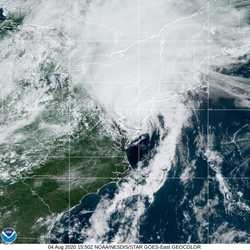 communication as Hurricane/Tropical Storm Isaias worked its way north. The storm is now in Canada after first making landfall in North Carolina as a Category 1 hurricane. High wind, rain, and the possibility of coastal flooding were considered the most likely dangers, but tornadoes broke out in the middle Atlantic states, triggering extensive damage, flooding, and knocking out power to more than 3 million homes and businesses. The storm caused at least five deaths. Southern New Jersey Section Emergency Coordinator (SEC) Tom Devine, WB2ALJ, was among several SECs who said their Sections were on alert but not activated for tropical storm winds, flash flooding, and tornadoes.
communication as Hurricane/Tropical Storm Isaias worked its way north. The storm is now in Canada after first making landfall in North Carolina as a Category 1 hurricane. High wind, rain, and the possibility of coastal flooding were considered the most likely dangers, but tornadoes broke out in the middle Atlantic states, triggering extensive damage, flooding, and knocking out power to more than 3 million homes and businesses. The storm caused at least five deaths. Southern New Jersey Section Emergency Coordinator (SEC) Tom Devine, WB2ALJ, was among several SECs who said their Sections were on alert but not activated for tropical storm winds, flash flooding, and tornadoes.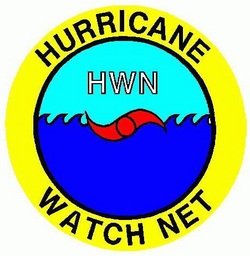 about 12 hours. HWN Manager Bobby Graves, KB5HAV, reported "very poor to nonexistent propagation" for the second activation, but he noted that a few members remained on the air to assist as needed.
about 12 hours. HWN Manager Bobby Graves, KB5HAV, reported "very poor to nonexistent propagation" for the second activation, but he noted that a few members remained on the air to assist as needed..jpg)
.png) threat from a non-operational Iridium satellite, although UWE-4 was already below the Iridium satellite at the projected time of conjunction.
threat from a non-operational Iridium satellite, although UWE-4 was already below the Iridium satellite at the projected time of conjunction.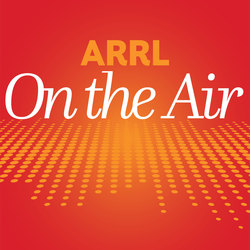 The latest episode of the On the Air podcast (Episode 7) features tips for soldering a PL-259 connector onto the end of a coaxial cable, and information on beginner courses for hams who want to serve their communities during disasters and other incidents. The On the Air podcast is a monthly companion to On the Air magazine, ARRL's magazine for beginner-to-intermediate ham radio operators.
The latest episode of the On the Air podcast (Episode 7) features tips for soldering a PL-259 connector onto the end of a coaxial cable, and information on beginner courses for hams who want to serve their communities during disasters and other incidents. The On the Air podcast is a monthly companion to On the Air magazine, ARRL's magazine for beginner-to-intermediate ham radio operators.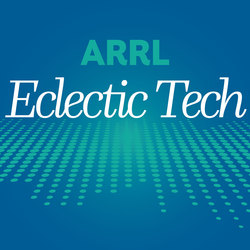 The latest episode of the Eclectic Tech podcast (Episode 13) features discussions about Hellschreiber, wireless charging on the fly, and an interview with Paul Denisowski, KO4LZ, about the state of amateur Automatic Link Establishment (ALE).
The latest episode of the Eclectic Tech podcast (Episode 13) features discussions about Hellschreiber, wireless charging on the fly, and an interview with Paul Denisowski, KO4LZ, about the state of amateur Automatic Link Establishment (ALE).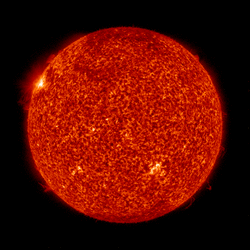 The average daily sunspot numberfor July 30 to August 5 was 19.6, up from 14.1 over the previous 7 days. Average daily solar flux rose from 71.1 to 72.8 over the same period.
The average daily sunspot numberfor July 30 to August 5 was 19.6, up from 14.1 over the previous 7 days. Average daily solar flux rose from 71.1 to 72.8 over the same period. "The many hamfest cancellations due to COVID-19 have been difficult for everyone this year," Inderbitzen said. "I'm really looking forward to this unique online experience and connecting with friends, old and new, from throughout the amateur radio community."
"The many hamfest cancellations due to COVID-19 have been difficult for everyone this year," Inderbitzen said. "I'm really looking forward to this unique online experience and connecting with friends, old and new, from throughout the amateur radio community." The W1A special event station will still be on the air over the weekend of October 31 - November 1 from operators' home stations. A virtual banquet on November 7 will feature a guest speaker. Afterward, virtual break-out rooms will be available for you to converse with your "table."
The W1A special event station will still be on the air over the weekend of October 31 - November 1 from operators' home stations. A virtual banquet on November 7 will feature a guest speaker. Afterward, virtual break-out rooms will be available for you to converse with your "table."
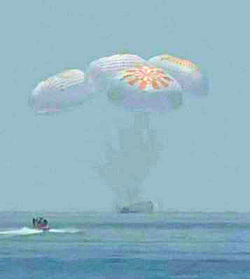 NASA Administrator Jim Bridenstine proclaimed that the US was entering a new era of human spaceflight, noting that NASA was no longer the only option for US space travel. "We are going to be a customer," he said. NASA has contracted with two companies -- SpaceX and Boeing -- to ferry astronaut crews to and from the ISS.
NASA Administrator Jim Bridenstine proclaimed that the US was entering a new era of human spaceflight, noting that NASA was no longer the only option for US space travel. "We are going to be a customer," he said. NASA has contracted with two companies -- SpaceX and Boeing -- to ferry astronaut crews to and from the ISS.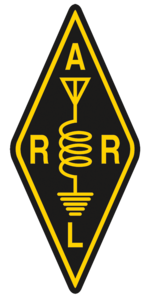 has made some changes to amateur radio call sign policies, including provision for a call sign for life for all licensees. All Australian amateurs may obtain three-letter-suffix call signs, but Foundation licensees may keep their four-letter suffix call signs if they wish.
has made some changes to amateur radio call sign policies, including provision for a call sign for life for all licensees. All Australian amateurs may obtain three-letter-suffix call signs, but Foundation licensees may keep their four-letter suffix call signs if they wish. 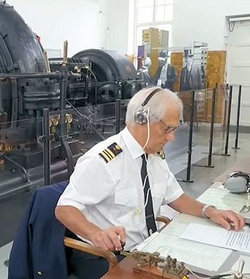
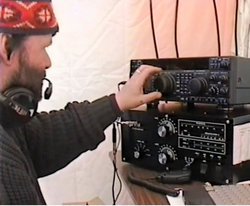
 ARRL Volunteer Monitors recognized 13 operators in 10 states with Good Operator letters during the second quarter of 2020. Among the operators recognized were CW and SSB operators on 20 and 40 meters, outstanding net operators on 2 meters (including a net control of the Central Indiana SKYWARN Net), and an operator on 40 meters who demonstrated exemplary courtesy and assistance to amateurs with technical issues.
ARRL Volunteer Monitors recognized 13 operators in 10 states with Good Operator letters during the second quarter of 2020. Among the operators recognized were CW and SSB operators on 20 and 40 meters, outstanding net operators on 2 meters (including a net control of the Central Indiana SKYWARN Net), and an operator on 40 meters who demonstrated exemplary courtesy and assistance to amateurs with technical issues..jpg) Nearly 19,000 took part in the COVID-19 Communication Event earlier this year. In the
Nearly 19,000 took part in the COVID-19 Communication Event earlier this year. In the 







